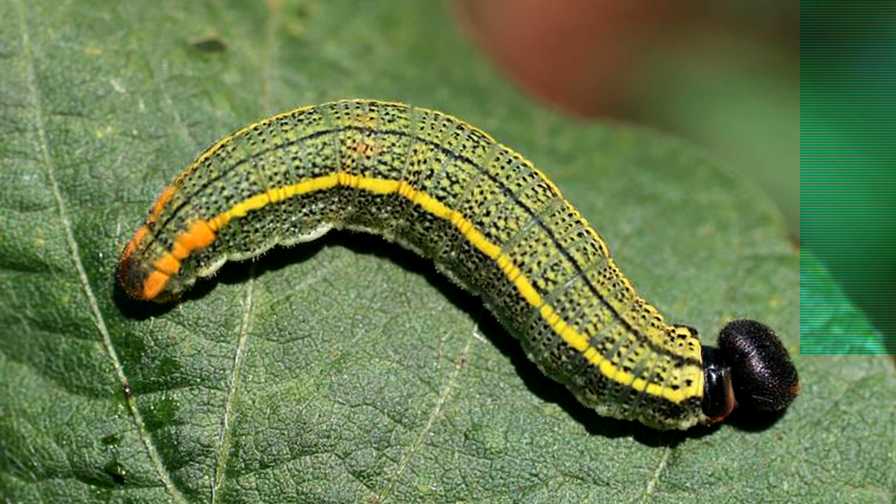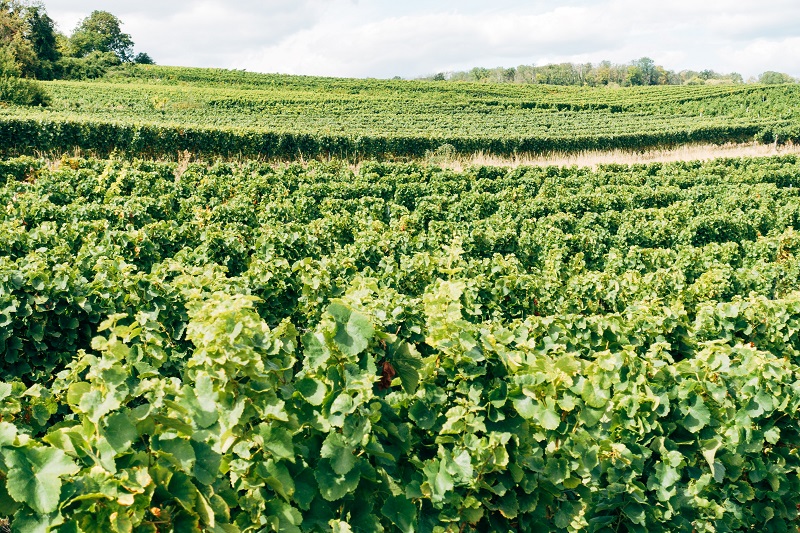Beware of Bean Leafroller in Your Legume Crops

The bean leafroller is a common pest of beans in Florida. Telltale signs of the pest include rolled leaves or ragged leaf edges.
Photo by Russ Ottens
The bean leafroller (Urbanus proteus L) is found from South Carolina to Texas and throughout Florida. It cannot tolerate freezing temperatures and overwinters mainly in South Florida.
First instar larvae are yellowish with a brownish-black head. The head is large relative to the body and remains this way throughout development. The second instar becomes marked with numerous small, black spots. Beginning with the third instar, lateral yellow lines become quite distinct. The last two instars are similar with brownish-black head, yellowish body sprinkled with black spots, and yellow lateral lines. The body tapers sharply toward both the anterior and posterior ends.
The bean leafroller moth is a large moth, measuring about 2 inches. The most pronounced feature are the extensions, or “tails,” on the hind wings, which give rise to the common name “longtail skipper.” The wings are chocolate brown on top and pale brown below. Green iridescent scales are present on the wings and body.
Larvae feed only on leaf tissue. Initially, the larva cuts a small, triangular patch at the edge of the leaf, folds over the flap, and takes up residence within this shelter. The larva leaves the shelter to feed and lines the shelter with silk. These flaps are used until the third or fourth instar, when the larva constructs a larger shelter formed by folding over a large section of the leaf by webbing together two separate leaves. Larvae feed nocturnally.
Survival and Spread
The leafroller feeds on a range of legumes, such as cowpea, snap bean, and soybean, as well as weedy legumes like Desmodium spp.
The bean leafroller completes its life cycle in about 30 days. It breeds in South Florida throughout the year. In North Florida, it doesn’t become abundant until September or October. In Florida, large numbers of adults are frequently observed migrating southward in the autumn.
Eggs are deposited singly or in small clusters of two to six eggs on the underside of leaves. The egg is a slightly flattened sphere, initially white in color but turns yellow with age. Eggs hatch in three to four days.
The larva pupates on the plant, within the shelter formed from leaf material. The pupa is yellow to brown and is covered by a bluish-white pubescence.
Management Methods
Populations are normally sampled by visual observation because the larvae are sheltered and difficult to dislodge by sweeping. Beans can tolerate up to about 30% leaf loss without reduction in yield. So, about four larvae must complete their development on a typical bean plant to inflict a damaging level of defoliation.
In Florida, predation by Polistes spp. wasps and stinkbugs has been observed.
Most insecticides applied to the foliage are very effective for leafroller suppression. The microbial insecticide Bacillus thuringiensis currently is not recommended for leafroller control.
Consult UF/IFAS recommendations for currently labeled insecticides for worm control in legumes.










